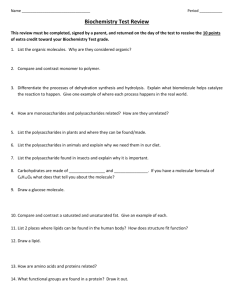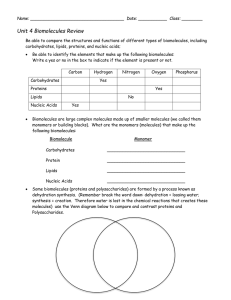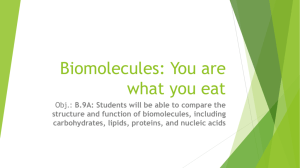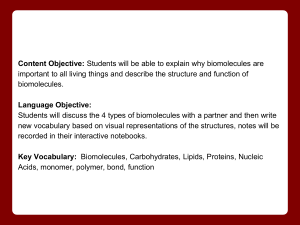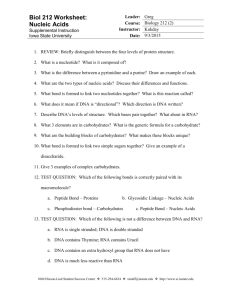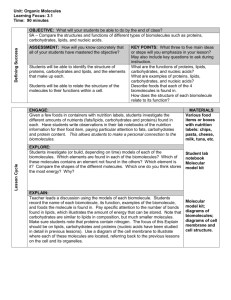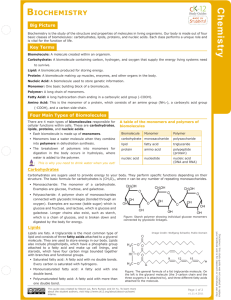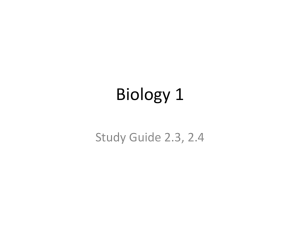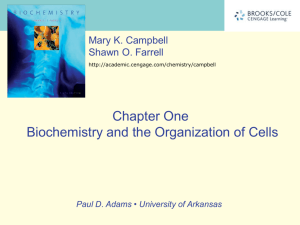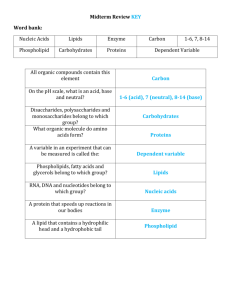CELL STRUCTURE & FUNCTION 1) Lipids are important to living
advertisement
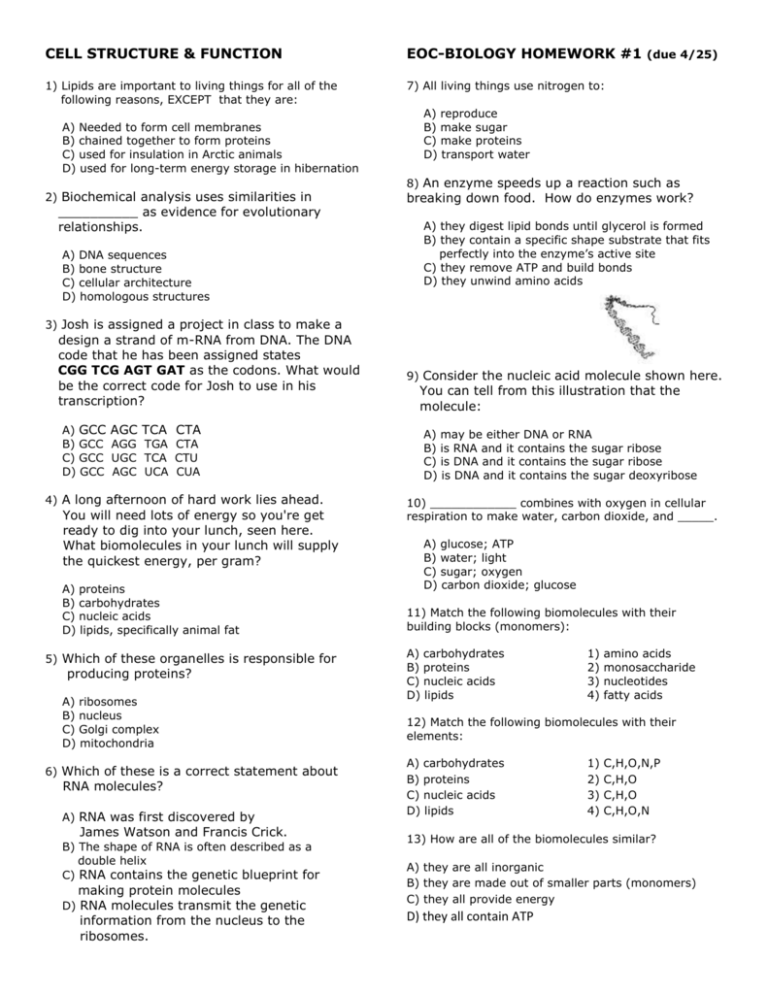
CELL STRUCTURE & FUNCTION EOC-BIOLOGY HOMEWORK #1 (due 4/25) 1) Lipids are important to living things for all of the following reasons, EXCEPT that they are: 7) All living things use nitrogen to: A) Needed to form cell membranes B) chained together to form proteins C) used for insulation in Arctic animals D) used for long-term energy storage in hibernation 2) Biochemical analysis uses similarities in __________ as evidence for evolutionary relationships. A) DNA sequences B) bone structure C) cellular architecture D) homologous structures A) reproduce B) make sugar C) make proteins D) transport water 8) An enzyme speeds up a reaction such as breaking down food. How do enzymes work? A) they digest lipid bonds until glycerol is formed B) they contain a specific shape substrate that fits perfectly into the enzyme’s active site C) they remove ATP and build bonds D) they unwind amino acids 3) Josh is assigned a project in class to make a design a strand of m-RNA from DNA. The DNA code that he has been assigned states CGG TCG AGT GAT as the codons. What would be the correct code for Josh to use in his transcription? A) GCC B) GCC C) GCC D) GCC AGC TCA CTA AGG TGA CTA UGC TCA CTU AGC UCA CUA 4) A long afternoon of hard work lies ahead. You will need lots of energy so you're get ready to dig into your lunch, seen here. What biomolecules in your lunch will supply the quickest energy, per gram? A) proteins B) carbohydrates C) nucleic acids D) lipids, specifically animal fat 5) Which of these organelles is responsible for producing proteins? A) ribosomes B) nucleus C) Golgi complex D) mitochondria 6) Which of these is a correct statement about RNA molecules? A) RNA was first discovered by James Watson and Francis Crick. B) The shape of RNA is often described as a double helix C) RNA contains the genetic blueprint for making protein molecules D) RNA molecules transmit the genetic information from the nucleus to the ribosomes. 9) Consider the nucleic acid molecule shown here. You can tell from this illustration that the molecule: A) may be either DNA or RNA B) is RNA and it contains the sugar ribose C) is DNA and it contains the sugar ribose D) is DNA and it contains the sugar deoxyribose 10) ____________ combines with oxygen in cellular respiration to make water, carbon dioxide, and _____. A) glucose; ATP B) water; light C) sugar; oxygen D) carbon dioxide; glucose 11) Match the following biomolecules with their building blocks (monomers): A) carbohydrates B) proteins C) nucleic acids D) lipids 1) 2) 3) 4) amino acids monosaccharide nucleotides fatty acids 12) Match the following biomolecules with their elements: A) carbohydrates B) proteins C) nucleic acids D) lipids 1) 2) 3) 4) C,H,O,N,P C,H,O C,H,O C,H,O,N 13) How are all of the biomolecules similar? A) they are all inorganic B) they are made out of smaller parts (monomers) C) they all provide energy D) they all contain ATP What elements are present? ____________________ Which biomolecule is this? _____________________ What elements are present? ____________________ Which biomolecule is this? _____________________ This is the plasma membrane of a cell. ___________ Which biomolecule is this? ____________________ What elements are present? ____________________ Which biomolecule is this? _____________________ What elements are present in this molecule?_________ Which biomolecule is this? _______________________ Which biomolecule is this? _______________________
